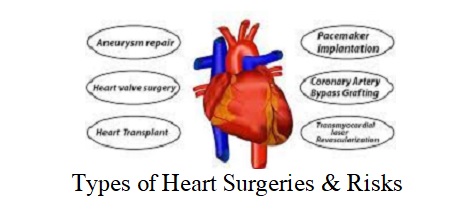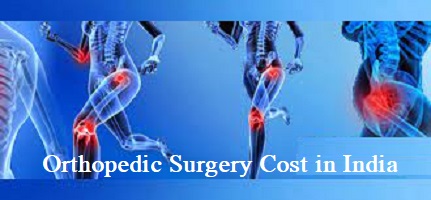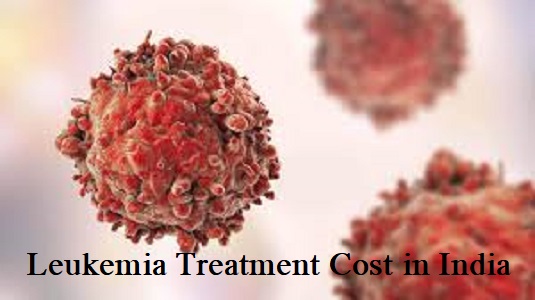Acute Myeloid Leukemia (AML) – Diagnosis, Treatment, Cost, and Recovery
Acute myeloid leukemia (AML), also called acute myelogenous leukemia, is a type of blood cancer that develops rapidly in the bone marrow and reduces the formation of white blood cells, red blood cells, and platelets. It mostly affects myeloid cells, which are responsible for the production of blood cells.
According to the National Cancer Institute, AML is the most prevalent form of acute leukemia in adults, with an estimated annual prevalence of about 19,520 new cases in just the United States.
Acute myeloid leukemia (AML) mostly affects elderly people and is rare before the age of 45. AML is diagnosed around the age of 68, making it mostly a disease of the elderly. However, AML may occur in children also. Men have a slightly higher prevalence of acute myeloid leukemia (AML) than women. The overall lifetime chance of getting AML in both genders is about 0.5%, or half of 1%.
If you or someone you know is looking for Acute Myeloid Leukemia (AML) treatment in India, you must be diagnosed early and receive proper medical treatment.
Types of Acute Myeloid Leukemia (AML)
Acute myeloid leukemia (AML) is a diverse group of blood cancers divided based on cancer cell maturity and genetic characteristics.
- Myeloid leukemia: This is the most common subtype of AML, affecting cells important for neutrophil generation.
- Acute Monocytic Leukemia (AML-M5): It affects the cells involved in monocyte generation.
- Acute Megakaryocytic Leukemia (AMLK): It affects the cells that produce red blood cells or platelets.
- Acute Promyelocytic Leukemia (APL): It is characterized by a genetic condition that prohibits promyelocyte maturation.
Symptoms of Acute Myeloid Leukemia (AML)
Some of the common symptoms of AML include:
- Flu-like symptoms, such as fever, weakness, and exhaustion.
- Unexplained bleeding such as nosebleeds and bleeding gums.
- Pale skin tone
- Abdominal swelling caused by an enlarged spleen or liver.
- Unexpected weight loss
- Discomfort in joints
- Sweating at night.
- Swollen Lymph nodes
Risk factors associated with Acute Myeloid Leukemia (AML)
Some of the common risk factors associated with Acute Myeloid Leukemia (AML) are:
- Age: AML is more common in older people, and the risk increases with age. It is most commonly detected in persons over the age of 65.
- Gender: Men are at greater risk than women to suffer from AML, while it can affect either gender.
- Smoking: Cigarette smoking is a common risk factor for AML because it exposes people to cancer-causing chemicals such as benzene found in tobacco smoke.
- Previous Cancer Treatment: Individuals who have received chemotherapy or radiation therapy earlier may be at a higher risk of developing AML. This type of AML is also known as “treatment-related” or “therapy-related” AML.
- Radiation Exposure: High amounts of ionizing radiation, whether from medical treatments or catastrophic events have been linked to an increased risk of AML.
- Blood Disorders: Some blood diseases such as myelodysplastic syndromes (MDS) and myeloproliferative disorders increase the likelihood of developing AML. MDS, in particular, has the potential to develop into AML over time.
- Genetic Factors: Down syndrome, neurofibromatosis type 1, and other genetic disorders have been associated with an increased risk of AML.
- Autoimmune Conditions: Certain inflammatory diseases, such as rheumatoid arthritis and ulcerative colitis, may increase the risk of AML.
Causes of Acute Myeloid Leukemia (AML)
Some of the common factors related to the causes of Acute Myeloid Leukemia (AML) are:
- DNA Mutations: Mutations or changes in the DNA of bone marrow cells disturb the normal growth and death cycle of blood cells, resulting in AML. These mutations generate an excessive number of immature white blood cells known as myeloblasts.
- Genetic Abnormalities: Some AML cases are connected with specific genetic abnormalities, such as changes in genes like FLT3, c-KIT, and RAS, which may speed up leukemia cell development.
- Inherited Factors: Although uncommon, inherited genetic disorders such as Down syndrome, Fanconi anemia, and others can increase the risk of developing AML. These genetic mutations occur from birth.
- Spontaneous Mutations: In many cases, the exact cause of the DNA changes that lead to AML is unknown. These mutations can develop at random during a person’s life with no evident external trigger.
Genetic Changes resulting in Acute Myeloid Leukemia (AML)
Bone Marrow Function: Bone marrow, which is found within the bones, is responsible for producing blood cells and platelets.
Blood Cell Production: Under normal conditions, the bone marrow produces stem cells that develop into red blood cells for transporting oxygen, white blood cells for protection from infection, and platelets for clotting.
AML’s Genetic Disruption: AML develops when mutations in the bone marrow cause the development of abnormal myeloid cells known as myeloid blasts or myeloblasts.
Aberrant Behavior: Myeloid blasts leave the normal DNA rules that control cell division and planned cell death. In contrast to normal cells, they grow uncontrolled and do not die naturally.
Overcrowding and Blood Cell Production Halt: Myeloid blast growth outnumbers healthy blood cell production in the bone marrow. As a result, the bone marrow stops producing enough healthy blood cells for proper biological activities.
Systemic Impact: Myeloid blasts spread into the bloodstream and go to many parts of the body, including the central nervous system, brain, and spinal cord, as they reproduce abnormally.
Diagnosis of Acute Myeloid Leukemia (AML)
Blood Tests:
- Complete Blood Count (CBC): It examines blood cell counts and identifies irregularities.
- Peripheral Blood Smear: It detects myeloid blast cells in the bloodstream which indicates the probability of having AML.
Bone Marrow Tests:
- Bone Marrow Aspiration and Biopsy: It collects bone marrow samples for microscopic inspection.
- Spinal Tap (Lumbar Puncture): It is rarely used to look for leukemia cells in cerebrospinal fluid.
Genetic Testing: It examines leukemia cells in laboratories to identify gene mutations and chromosome abnormalities.
Specialized Tests:
- Immunohistochemistry: It detects certain substances by staining the cells.
- Flow Cytometry: It diagnoses specific leukemia types and minimal residual disease.
- Karyotype Test: It analyzes chromosome arrangements in leukemia cells.
- Fluorescence-in-situ-hybridization (FISH): It detects minor chromosomal changes.
- Polymerase Chain Reaction (PCR): It is highly sensitive to small mutations and chromosomal abnormalities.
- Biomarker Testing (Molecular Testing): It examines DNA/RNA sequences in cancer cells.
Treatment options for Acute Myeloid Leukemia (AML)
- Remission Induction Therapy:
Chemotherapy: Chemotherapy is the use of powerful medications to kill leukemia cells in the blood and bone marrow. Common medications include cytarabine, daunorubicin, idarubicin, azacitidine, decitabine, and venetoclax.
Targeted Therapy: Targeted medicines such as midostaurin (FLT3 mutation) or gilteritinib (FLT3 mutation) may be given alone or in combination with chemotherapy for certain genetic mutations.
Monoclonal Antibody Therapy: Certain AML patients might be helped with monoclonal antibodies that attach to CD33 on leukemia cells.
- Consolidation Therapy: Consolidation therapy is used after treatment to kill any leftover leukemia cells and lower the chance of relapse. For consolidation therapy, high-dose cytarabine (Ara-C) is a common choice, often given over several months.
- Maintenance Therapy: While consolidation therapy may result in complete recovery, some patients may require maintenance therapy to avoid relapse. Maintenance therapy may include medications such as azacitidine, decitabine, or midostaurin depending on the patient’s demands.
- Allogeneic Stem Cell Transplant: An allogeneic stem cell transplant (bone marrow transplant) may be recommended in certain cases, especially for high-risk AML or recurrent AML. The patient’s bone marrow is replaced with healthy stem cells from a compatible donor during this operation. It is a potentially curative method, but it is associated with severe risks and typically chosen for younger, medically fit patients.
- Radiation Therapy: Radiation therapy is not the main treatment for AML, but it may be used in certain cases, such as total-body irradiation before a stem cell transplant.
- Clinical Trials: Clinical trials provide AML patients with access to the latest and new treatments.
Prognosis of Acute Myeloid Leukemia (AML)
50% to 80% of patients with leukemia can recover and no longer have the disease. This is known as complete remission, and it is more common in younger people and children. It can last for several years.
However, almost half of the individuals who recover may experience a relapse of leukemia. If this occurs, doctors might suggest additional treatments such as chemotherapy or perhaps a stem cell transplant.
Survival Rate of Acute Myeloid Leukemia (AML)
Because of the numerous subtypes of Acute Myeloid Leukemia (AML), survival rates are highly variable. For example, children under the age of 15 have a 67% five-year survival rate, but for those with the APL subtype, this rate may exceed 80%. Adults with AML, on the other hand, have a five-year survival rate of roughly 30%, owing to the fact that AML is more common in those aged 60 and older.
It is important to note that factors such as age, overall health, genetic abnormalities, and response to treatment can all have a major effect on survival rates. Younger patients and those with more favorable genetic profiles tend to perform better. In recent years, advances in treatments, including stem cell transplantation and customized medicines, have improved survival rates.
Cost of Acute Myeloid Leukemia (AML) Treatment in India
The Acute Myeloid Leukemia (AML) treatment cost in India depends on factors such as treatment type, hospital choice, and different medical conditions.
- Induction Chemotherapy AML treatment cost in India: Approximately around $10,000
- Consolidatory Chemotherapy AML treatment cost in India: Around $3,500 to $4,000
- Autologous Bone Marrow Transplant AML treatment cost in India: Around $15,000
- Allogeneic Bone Marrow Transplant (Full-match) AML treatment cost in India: Approximately $22,000
- Allogeneic Bone Marrow Transplant (Half-match) AML treatment cost in India: Around $40,000
Best Hospitals for Acute Myeloid Leukemia (AML) Treatment in India
India has several world-class hospitals recognized for their expertise in the treatment of Acute Myeloid Leukemia (AML). These hospitals include advanced facilities, skilled medical teams, and a comprehensive choice of AML treatments. Patients from all around the world seek treatment at these best Hospitals in India for Acute Myeloid Leukemia (AML) Treatment.
- Aakash Healthcare Super Specialty Hospital
- Max Super Specialist Hospital Saket
- Fortis Memorial Research Institute
- Artemis Hospital Gurgaon
- BLK Super Specialty Hospital
- Sanar International Hospital Gurugram, Delhi NCR
- Indraprastha Apollo Hospital
- Medanta – The Medicity Hospital
- Marengo Asia Hospital, Gurugram
- Max Super Specialist Hospital Saket
Top Doctors for Acute Myeloid Leukemia (AML) Treatment in India
India has highly skilled specialists who specialize in the treatment of Acute Myeloid Leukemia (AML). These skilled medical specialists are well-equipped to give comprehensive care for Acute Myeloid Leukemia (AML) treatment in India.
- Rahul Bhargava – Fortis Memorial Research Institute, Gurgaon
- Nitin Sood – Medanta The Medicity
- Subodh Chandra Pandey – Artemis Hospital
- Shishir Seth – Indraprastha Apollo Hospitals
- Dharma Chaudhary – Sanar International Hospital, Gurgaon
- Gaurav Kharya – Indraprastha Apollo Hospitals
- Ramandeep Singh Arora – Max Super Specialty Hospital Saket
- Aniruddha Dayama –
- Sachin Jadhav – BGS Gleneagles Global Hospital Bangalore
- Rahul Naithani – Paras hospitals, Gurugram.
Contact Form
Attach Medical Report
Top Doctors & Surgeons in India
Why Choose Us

Personalized Care
24x7 Supports
Top NABH and JCI accredited Hospitals
Free Cost Estimation & Medical Opinion from Specialist
Get Free Tele/Video Consultation
Visa and Traveling Assistance
Post-surgery with Assistance in Follow-ups














